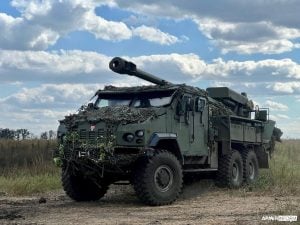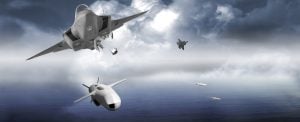5 things you need to know about the induction of Rafale jets into IAF at Ambala
- The Indian Air Force is all set to formally induct its latest Rafale fighter jets at the Ambala airbase on Thursday in the presence of defence minister Rajnath Singh, officials said Wednesday. French defence minister Florence Parly and Air Chief Marshal RKS Bhadauria will attend the ceremony, they added. The two ministers are likely to hold a meeting on the side-lines of the event, the officials said.
- Here are five things you should know about India’s latest warplanes
- Five of the 36 Rafales ordered by the IAF arrived at the Ambala airbase on July 29. India had ordered the jets from France in a government-to-government deal worth Rs 59,000 crore in September 2016. While the air chief and other IAF officials welcomed the Rafales and the pilots on arrival, a formal induction ceremony is being held on September 10. These Rafale jets are part of the IAF’s No. 17 Squadron, also known as the ‘Golden Arrows’.
- The next batch comprising three or four Rafale jets is expected to reach Ambala from France in October, followed by a third batch in December, the officials said. All deliveries will be completed by the end of 2021.
- India’s new Rafale fighters will significantly enhance the offensive capabilities of the air force with their advanced weaponry, high-tech sensors, superior radar for detection and tracking of targets and ability to carry an impressive payload, experts said.
- The Rafale weaponry includes Meteor, beyond visual range air-to-air missiles, Mica, multi-mission air-to-air missiles, and Scalp, deep-strike cruise missiles—weapons that allow fighter pilots to attack air and ground targets from standoff ranges and fill a significant capability gap.
- Officials said the IAF could deploy its new Rafale fighters in the Ladakh sector as part of India’s overarching plan to strengthen its military posture in the region, where Indian and Chinese forces are locked in a tense border confrontation and military friction has grown in recent weeks.
50,000 PLA men and surface-to-air missiles near LAC
- China has amassed over 50,000 troops and a range of aircraft and missile systems across the Line of Actual Control, but the top level of the Indian government assesses that the threshold for a conflict has still not been reached though India is prepared for any eventuality.
- While recent events like attempts to approach Indian forward posts and push back troops located at strategic heights are being watched carefully, there is a view that Chinese actions were more akin to ‘pinpricks’ and the current deployment of the PLA is not geared for tactical action, though they could well build up to an armed conflict on the border. India has also clearly conveyed to China that any attempt to breach the perimeter around its forward posts along LAC will be treated as an act of hostility which will get a professional Army response.
- According to intelligence with Indian officials, China has amassed about 50,000 troops, surface-to-air missiles, a large section of rocket forces and close to 150 fighter aircraft within striking distance of LAC, the largest build-up of troops in the region.
- The build-up has enhanced steadily since early May, when China redeployed troops participating in an exercise in Tibet towards LAC. India has still not been able to figure the motive and timing of the move. There is an assessment that the PLA troops are not controlled by local military commanders but directly from Beijing. It is learnt that in the new conflict zone along the southern bank of Pangong Tso, Chinese troops have been trying to test Indian positions daily, apparently on the direct instructions from Beijing.
- Besides attempts to approach Indian forward positions in Chushul, PLA has made attempts to send in light tanks and infantry combat vehicles across the border, which were blocked by larger Indian Army tanks that have been deployed as tensions shot up. The situation along the northern bank of the Pangong Tso also remains tense, with Indian Army taking positions at forward locations in the Finger Area, in contention since early May when the PLA took control of Finger 4 and constructed defences to block Indian access towards Finger 8.
S Jaishankar meets Sergey Lavrov to further special partnership amid LAC tensions
- Foreign Minister S Jaishankar is understood to have discussed ongoing tensions along LAC among other issues with his Russian counterpart Sergey Lavrov in Moscow on the eve of his meeting with Chinese FM Wang Yi.
- “Pleasure to meet FM Sergey Lavrov, this time in person. Excellent talks that reflect our Special and Privileged Strategic Partnership. Value our exchanges on the international situation,” Jaishankar tweeted on Wednesday night following his meeting with Lavrov, hosts for SCO Foreign Ministers meet.
- The two Ministers are understood to have discussed several aspects of strategic partnership in the run-up to the annual summit that would witness agreements across sectors including defence, connectivity, space and nuclear energy.
- This was Jaishankar’s second visit to Moscow since 2019 and the two last met in Delhi this January on the sidelines of the Raisina Dialogue. Over the last few months the two Ministers have interacted number of times through virtual medium.
- Among international issues situation in Afghanistan, West Asia and South Asia are understood to have figured. Russian role could be critical in ending impasse along the LAC as Moscow has been engaged in backchannel diplomacy to defuse tensions.
- Moscow has also assured critical defence supplies during the time of crisis and considering India’s request to expedite supply of S-400 missile defence system.
- Apart from the traditional pillars, India and Russia working together to explore potential areas of cooperation in areas like agriculture, coking coal, pharma & health sector, digital & IT sectors, exchange of skilled manpower, cooperation between the regions including in the Far East, cooperation in the Arctic, logistics and connectivity. India has launched Act Far East policy and planning to expand its footprints in the resource rich Far-East Russia. Maritime connectivity and partnership are among new areas of focus with both Delhi and Moscow seeking to build a Indo-Pacific cooperation.
India’s defence exports increase by 700% in two years, ranks 19th among world’s defence exporters
- The central government under Prime Minister Narendra Modi has had the long-standing ambition of making India one of the leading exporter of defence equipment and as per latest information, the Centre has indeed lived up to its promise on that front.
- Chief of Defence Staff General Bipin Rawat on Wednesday said that India is currently ranked 19th in the list of top defence exporters in the world, as of 2019 data.
- “We witnessed a staggering 700% growth in defence exports from Rs 1521 crores in 2016-17 to Rs 10,745 crores in 2018-19…an all-time high ranking of 19th in the list of defence exporters in 2019,” CDS Rawat said during an e-symposium on ‘Catalysing Defence Exports’ via video conferencing.
- In order to boost PM Modi’s clarion call for ‘Atmanirbhar Bharat’, the Union Ministry of Defence in August formulated a draft Defence Production and Export Promotion Policy 2020 as an overarching guiding document to provide a focused, structured and significant thrust to defence production capabilities of the country for self-reliance and exports.
- “The policy aims to achieve a turnover of Rs 1,75,000 crores, including export of Rs 35,000 crores, in aerospace and defence goods and services by 2025,” the Defence Ministry said in a statement on August 3.
- Defence Minister Rajnath Singh had in August announced a major policy decision about the imposition of a phase-wise ban on the import of 101 military weapons systems and platforms in order to promote the domestic defence industry.
- “We cannot depend on foreign governments, foreign suppliers and foreign defence products to meet our defence needs. It is not compatible with the objectives and feelings of a strong and ‘Atmanirbhar Bharat’,” he had said back then.
After India, Australia to Acquire K9 ‘Thunder’ Self-Propelled Howitzers from South Korea
- The Australian Government has announced that it would procure new self-propelled 155mm/52caliber artillery guns from South Korea via a press release by the Australian Department of Defense on Thursday.
- The deal calls for the supply of 30 K9 ‘Thunder’ self-propelled howitzers and associated support equipment, including 10 K10 ammunition resupply vehicles (ARVs). The Korean defense contractor has bagged 1 trillion won ($843 million) for the project.
- The government announced that it had chosen the K9 Thunder as the sole candidate for the country’s Land 8116 Artillery Replacement project, one of the Australian Army’s modernization programs.
- “This deal will enhance Hanwha’s reputation globally and expand exports of Korea’s weapons,” said Lee Sung-soo, CEO of Hanwha Defense. The company will manufacture the K9 systems in Australia by building facilities near Melbourne and provide maintenance and repair services via local companies.
- “After delivering the 30 K9 howitzers and 10 K10 ARVs, we’ll seek more contracts with Australia,” said An Byung-chul, Hanwha’s vice president in charge of business development in Europe and Australia.
The K-9 ‘THUNDER’
- The K-9, nicknamed ‘thunder’ is a self-propelled howitzer system designed by the South Korean Agency for Defense Development (ADD) and Samsung Aerospace Industries, now manufactured by Hanwha Defense. It fires the 155mm/52 caliber projectile up to ranges of 40-50 kilometers depending on the ammunition variant.
- The system has been successfully exported to seven countries, which include Turkey, Australia, India, Estonia, Norway, Finland and Egypt.
- It has an operational range of 480 kilometers and can achieve maximum on-road speeds of 67 km/hr, making it an attractive option in its category. The system is complemented by an ammunition resupply vehicle and has the ability to fire shells in MRSI mode (Multiple Rounds Simultaneous Impact), firing three shells in under 15 seconds—1 shell every 5 seconds—each in different trajectories so that all of the shells will arrive on their target at the same time.
- According to the Stockholm International Peace Research Institute, the K9 Thunder accounted for 48% of the global self-propelled howitzer market between 2000 and 2017. Australia is also one of the few customers, second after Norway, who have also sought to buy the Ammunition Resupply Vehicle, called the K-10.
China edges ahead of United States in integrated air defence, land-based missiles, and naval shipbuilding: DoD
- China’s relentless efforts to modernise and restructure the People’s Liberation Army (PLA) has resulted in an increasingly capable and well-equipped organisation that is well on its way to becoming a “world-class” military force, the United States Department of Defense (DoD) said in its annual report to congress on Chinese military and security developments.
- In particular, the latest 200 page-long DoD assessment – also known as the China Military Power Report – highlighted three specific areas where China has already surpassed the United States: integrated air defence (IAD) systems, land-based conventional ballistic and cruise missiles, and naval shipbuilding.
Air defence
- The DoD noted that the PLA Air Force (PLAAF) now maintains one of the most advanced long-range surface-to-air (SAM) systems in the world, with ground-based air defence (GBAD) battalions equipped with Russian-made Almaz-Antey S-300 and the indigenously manufactured Hong Qi-9 (HQ-9) mobile SAM systems.
- China is also acquiring the more advanced S-400 while developing the improved HQ-9B to further boost its strategic long-range air defence capabilities, with the first S-400 test firings completed in December 2018.
- Further enhancements are also expected, including the HQ-19 – which the DoD also identifies as the CH-AB-X-02 – which is believed to possess a ballistic missile defence (BMD) capability. The report also pointed out that China is aiming to field a mid-course kinetic-kill interceptor that will form the upper layer of a multi-tiered missile defence umbrella.
- “[China] has one of the world’s largest forces of advanced long range surface-to-air systems – including Russian-built S-400s, S-300s, and domestically produced systems – that constitute part of its robust and redundant integrated air defence system architecture,” the DoD said.
Ground-based ballistic and cruise missiles
- The PLA Rocket Force (PLARF) is also operating a growing number of ground-based conventional and nuclear intercontinental ballistic missiles (ICBMs) that can carry multiple independently targetable re-entry vehicles (MIRVs). The PLARF’s inventory includes the Dong Feng-41 (DF-41), which were highlighted during the National Day military parade on 1 October 2019.
- The DoD believes that China possesses over 1,250 ground-launched ballistic missiles and ground-launched cruise missiles with that can engage targets between 500 and 5,500 km. In contrast, the United States currently only fields one type of conventional ground-based ballistic missile with a range of up to 300 km and no cruise missiles.
Growing naval capability
- The DoD starkly warned that China now possesses the largest navy in the world with an estimated fleet of 350 ships and submarines, including over 130 surface warfare ships and other major platforms such as aircraft carriers, fleet auxiliaries, as well as amphibious assault and mine warfare ships.
- “In comparison, the US Navy’s battle force is approximately 293 ships as of early 2020,” it said. The report also highlighted the progress in the construction of the PLA Navy’s (PLAN’s) third aircraft carrier, which is expected to be more advanced and larger than the previous two and will feature a catapult launch system for the first time. The DoD believes that the third carrier will enter service in 2023 and be operational by 2024 and will possibly embark the fifth-generation FC-31/J-31 multirole fighter aircraft that is currently in development.
- The PLAN submarine force is also growing, with as many as 17 Yuan-class (Type 039A/B) diesel-electric submarines – which are equipped with air-independent-propulsion (AIP) systems for extended endurance – already in service by the end of 2019 and potentially growing to 25 or more by 2025.
- The DoD also expects China to introduce a new variant of the Shang-class (Type 093/093A) nuclear-powered attack submarine (SSN), the cruise missile-capable Type 093B, by the mid-2020s. The PLAN’s nuclear-powered ballistic missile submarine (SSBN) fleet, which currently constitutes for Jin-class (Type 094) boats, will also be expanded with two more being outfitted prior to imminent fielding.
US withdrawing thousands of troops from Iraq and Afghanistan
- The United States will pull thousands of troops out of Iraq and Afghanistan by November, the top American commander for the Middle East said Wednesday, as President Donald Trump tries to make good on his campaign promise to get America out of “endless wars.”
- During a visit to Iraq, Marine Gen. Frank McKenzie, the commander of U.S. Central Command, said the reduction in Iraq – from about 5,200 troops to about 3,000 – reflects the Trump administration’s confidence in the ability of U.S.-trained Iraqi security forces to handle the militant threat from the Islamic State group.
- Later, McKenzie said troop levels in Afghanistan would drop to 4,500 by November. He made the statement in a telephone call with a small group of reporters, according to officials at his Central Command office.
- “We’re on a glide slope to be at 4,500 by the November time frame – October, late October, November time frame,” he said, according to a transcript made available by his office. He said the path to 4,500 would be determined in part by the military’s ability to get equipment out of the country.
- The U.S. presidential election is on Nov. 3.
- “At 4,500 we’re still going to be able to accomplish the core tasks that we want to accomplish,” he said. “And we’ve shown more than ample goodwill and our willingness to demonstrate that we don’t want to be an occupying force in this country. But we do have strategic interests, vital interests, that compel us to be certain that these entities, such as al-Qaida and ISIS, can’t be guests there to attack the United States.”
- The U.S. had reduced its presence in Afghanistan to 8,600 in June and was known to plan further reductions, although McKenzie had not previously cited a projected number. He gave no exact date for reaching the 4,500 level; he said a specific date has been targeted but he would not reveal it.
- The moves come as Trump faces criticism for allegedly denigrating American war dead as “losers” and “suckers.” He has denied the allegation, first reported by The Atlantic magazine last week, which surfaced at a time of heightened tension in his relationship with the military. Trump added to the perception of a growing split with Pentagon leaders when he said on Monday that they want to fight wars to boost the profits of defense companies.
- Trump has been trying to make the case that he has fulfilled the promises he made four years ago as he campaigns for a second term.
- U.S. forces have been in Afghanistan since 2001 when they invaded in response to the 9/11 attacks planned by al-Qaida, the militant group that enjoy refuge while the Taliban ruled Afghanistan. The U.S.-led invasion quickly toppled the Taliban from power, but the ensuing conflict dragged on far longer than expected.
- U.S. troops invaded Iraq in 2003 and left in 2011 but returned in 2014 after the Islamic State group overran large parts of Iraq.
- In June, McKenzie announced that the number of U.S. troops in Afghanistan had dropped to 8,600, the level that the U.S. agreed to in a February peace with the Taliban that also calls on the U.S. to withdraw entirely by next spring.
- McKenzie said in recent weeks that he had doubts about a full withdrawal because of questions about the Taliban’s continued relationship with al-Qaida and high levels of violence in Afghanistan. On Wednesday he spoke confidently, however, about conditions in Iraq and the outlook for stability there.
- “In recognition of the great progress the Iraqi forces have made and in consultation and coordination with the government of Iraq and our coalition partners, the United States has decided to reduce our troop presence in Iraq from about 5,200 to 3,000 troops during the month of September,” McKenzie said during his Iraq visit, according to an excerpt of his remarks provided by his office.
- McKenzie said the remaining U.S. troops would continue advising and assisting Iraqi security forces as they attempt to root out remnants of the Islamic State group, sometimes called ISIS.
- “The U.S. decision is a clear demonstration of our continued commitment to the ultimate goal, which is an Iraqi security force that is capable of preventing an ISIS resurgence and of securing Iraq’s sovereignty without external assistance,” McKenzie said. “The journey has been difficult, the sacrifice has been great, but the progress has been significant.”
- Although Trump has talked of withdrawing completely from Iraq, Pentagon officials have cautioned that a U.S. troop presence remains necessary to guard against an IS resurgence and to help the Iraqi government limit the political and military influence of Iran, which supports militias operating inside Iraq.
- Trump aides have faulted the Obama administration for having pulled out of Iraq too soon in 2011 but say the time is now right.
- “This is a president, when he says I’m going to end endless wars, it’s not a slogan like it’s been for Democrats and past presidents,” Kayleigh McEnany, the White House press secretary, said Wednesday on Fox News.
- Tensions spiked between the U.S. and Iraq in January after a U.S. drone strike near the Baghdad airport killed Iranian Gen. Qassem Soleimani and Iraqi militia leader Abu Mahdi al-Muhandis. Angry Iraqi lawmakers, spurred on by Shiite political factions, passed a nonbinding resolution to oust all U.S.-led coalition forces from the country.
- In response to the Soleimani killing, Iran on Jan. 8 launched a ballistic missile attack on al-Asad air base in Iraq, which resulted in traumatic brain injuries to more than 100 American troops. Two months later, U.S. fighter jets struck five sites in retaliation, targeting Iranian-backed Shiite militia members believed responsible for the January rocket attack.
Multiple Chinese Su-30 and J-10 fighter jets enter airspace to Taiwan’s southwest
- Multiple Chinese fighter jets entered airspace to Taiwan’s southwest on Wednesday, said the island’s defence ministry, describing it as a destabilising action which threatened regional peace.
- Taiwan, claimed by China as its own territory, has repeatedly complained of Chinese military activities near the island, including regular air force patrols. China says such drills demonstrate its resolve to protect its sovereignty.
- China has in the last few weeks mounted numerous exercises up and down its coast and near Taiwan.
- Taiwan’s Defence Ministry said the Chinese Su-30 and J-10 fighters had entered Taiwan’s “response zone” to its southwest on Wednesday morning, adding that multiple aircraft were involved.
- Taiwan’s armed forces are able to respond quickly and appropriately to such movements, the military said, calling on people not to be alarmed.
- Taiwan’s Liberty Times newspaper said Taiwan issued 24 verbal warnings over the radio for the Chinese aircraft to leave.
- Taiwan is currently carrying out live fire weapons tests off its southeast and eastern coast. There was no immediate comment from China.
- Taiwan President Tsai Ing-wen warned last month that the risk of accidental conflict was rising because of tension in the South China Sea and around Taiwan and communication must be maintained to reduce the risk of miscalculation.
REVIEW QUESTIONS
- Five of the 36 Rafales ordered by the IAF arrived at the Ambala airbase on
- June 26
- July 28
- July 29
- June 28
ANSWER: C
- India had ordered the jets from France in a government-to-government deal worth ___ in September 2016.
- Rs 58,000 crore
- Rs 59,000 crore
- Rs 60,000 crore
- Rs 61,000 crore
ANSWER: B
- Foreign Minister S Jaishankar is understood to have discussed ongoing tensions along LAC among other issues with his Russian counterpart ____ in Moscow
- Sergey Karjakin
- Sergey Lavrov
- Sergey Bubka
- Sergey Shoigu
ANSWER: B
- Chinese Finance Minister
- Wei Fenghe
- Li Keqiang
- Wang Yi
- Hsu Kuo-yung
ANSWER: C
- Chief of Defence Staff General Bipin Rawat on Wednesday said that India is currently ranked ___ in the list of top defence exporters in the world, as of 2019 data.
- 19th B. 20th
- 21st D. 22nd
ANSWER: A
- The United States will pull thousands of troops out of which two countries by November?
- Iran and Iraq
- Iran and Afghanistan
- Iraq and Afghanistan
- None of the above
ANSWER: C


















